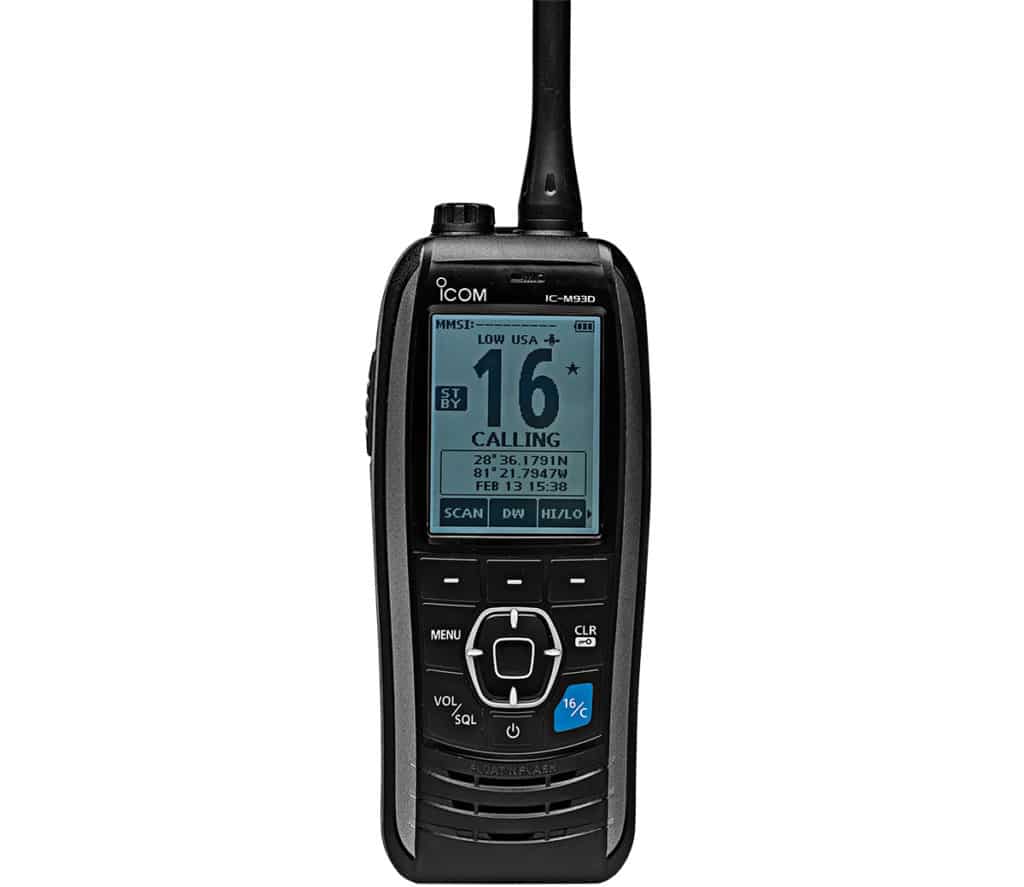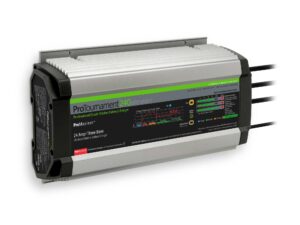
The first piece of marine electronics I owned was a Sea Ranger handheld VHF (I’ll share about the Heathkit depth sounder I built another time). This unit was not waterproof, did not float, offered no positioning capability, and the audio quality was akin to that of a gagged person eating peanut butter. Handhelds have come a long way since then. Learn about the following features before you shop for handheld marine electronics.
Waterproof
Perhaps the biggest failing of my old Sea Ranger was that I needed to treat it with such great care. Look for a waterproof radio or GPS rated to the IPX7 standard. Leave any touted as “water-resistant” on the shelf.
Floating
The man-overboard implications of nonfloating marine electronics should be obvious. Waterproof is nice — so long as you only drop your handheld VHF or GPS in warm, clear, shallow water. Floating collars or cases can work, but a floating unit is best.
Daylight Viewability
The ability to see the display in sunlight is a function of backlight intensity, display size and anti-reflective screens. There are three surfaces that can create reflection or glare: both sides of the screen and the surface of the LCD panel itself. Ask the clerk to power it up and walk you outside to see for yourself.
Battery Life
Stated battery time must be balanced against features available. Read the specs for operating time and compare between similar units. Note that for radios, “transmission time” (when you are talking) is shorter than “standby time” (when you are not talking).
Positioning
Many handheld VHF radios now offer AIS, GPS, GNSS, and WAAS positioning and plotting capabilities. The number of waypoints is one point of comparison. Coupled with DSC (digital selective calling) capability, this makes for a powerful safety tool, provided you register and receive a Maritime Mobile Service Identity number. Visit boatus.com/mmsi for more information.
Audio
Sound output is measured in milliwatts (mW). More indicates a louder radio, which is important given wind, water and engine noise. Clarity is harder to measure. Power up the radio you are considering and tune in to the weather band. Then adjust the volume from silent to full and listen for yourself.
Power
More output power doesn’t necessarily mean more range. VHF is line of sight, so all handhelds offer the same theoretical range. But more power, rated in watts, will allow the signal to be heard better through other radio traffic on the increasingly cluttered VHF frequencies. (This is why courteous boaters switch to low power whenever possible.)
Charging
The ability to charge via USB is a nice feature of many newer radios, given so many other electronic devices charge with it. Also, look for charging cables that connect to traditional 12-volt receptacles. Some radios accept conventional alkaline batteries in addition to their rechargeable battery packs, offering yet another option for backup and convenience.
IP Codes Explained
The International Protection Marking classifies and rates the degree of protection provided by devices like marine radios against intrusion by dust and accidental contact with water. The ratings include the letters IP followed by digits indicating levels of protection. The first digit is the rating of dust resistance. The second digit is the rating of water resistance. An X in place of a digit indicates that no testing for that category was completed. So, a VHF with an IPX7 rating can withstand immersion in water up to 1 meter deep for 30 minutes, but the unit simply was not tested for dust intrusion.







